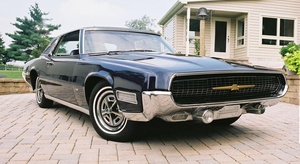
Story and Photography by Carl Heideman
Certain projects seem to instill anxiety in even the most hardcore enthusiasts. Wiring probably takes top prize in this category, with brake plumbing running a close second.
What makes brake plumbing such a headache? We strongly b…
Read the rest of the story
Use the Ni-Cu lines , way easier to work with than SS or Steel. Volvo uses it as OEM becuase it wont corrode.
Agent98 said:
Use the Ni-Cu lines , way easier to work with than SS or Steel. Volvo uses it as OEM becuase it wont corrode.
I agree with this, although being easier to bend also means they are easier to mess up and pinch while you're bending, so be extra careful.

oneway
New Reader
1/10/20 9:58 p.m.
Great article and very useful. My first attempt at brake lines was our 68 Datsun roadster. Pre bent kits were very expensive so I thought it would be worth a try. The project came out OK. Learned a lot and some of my tactics are found in this informative article. Good to know that even the experts rely on good old fashioned fabrication. My next project is our 1978 280Z which will be needed all new lines as well. I played around with some of the Ni-Cu lines on display at the Charlotte Auto Fair at the Classic Tube display and was quite amazed. I almost bought a roll and fitting assortment but the Z car resurrection project has a lot of other work to be done before tackling the brake system which will include changing over to disc brakes in the rear. Keep providing the great how to info for those of us on a budget. Thanks, John-Lugoff, SC
Nickel/copper lines and a piece of pipe for a bend mandrel go a long way. X100 on the good flaring tool.
Yup. And I've never managed to kink nicopp lines.
Mastercool was one of the best tools I've ever bought.
In reply to Dusterbd13-michael :
What tools would ya'll recommend for brake lines?

P3PPY
SuperDork
3/31/24 11:45 a.m.
After many failed attempts with the rental tools this style is nearly fool-proof unless you tighten it down too much. I can even double flare on the car itself now. Also, nickel/copper lines
$40 tool

BTW, a quick google search of << site:grassrootsmotorsports.com brake flare >> reveals these discussions, too:
https://grassrootsmotorsports.com/forum/tech-tips/the-perfect-flare-every-time/178918/page1/
https://grassrootsmotorsports.com/forum/grm/novel-and-affordable-brake-like-flare-tool/180562/page1/
https://grassrootsmotorsports.com/forum/grm/brake-line-flaring-kit/238130/page1/
etc.

NOHOME
MegaDork
3/31/24 12:56 p.m.
In reply to P3PPY :
That tool rocks.
The other took that comes in handy for the inevitable tight turn at the end of the line are brake line pliers

Great advice about being fussy and using good tooling.
Tube end prep:
Prepare the tube end before flaring. The tube end after the cut has a big burr that almost closes the opening. Use the deburring tool that usually is on the tube cutter to remove the metal and smooth the end of the tube to remove any burrs or tears. Good to use fine sandpaper to finish smooth. This prepares the end of the tube to flare properly. I use a little oil on the tip of the flare tool to make it easier for the flare to form without causing the tube end to crack.
Older English and Swedish (mostly Girling) cars use only the first step of the flare to make a "bubble flare".
Especially important for making AN 37degree single flares. End prep process was taught to me by a Navy A&P mechanic.

j_tso
Dork
3/31/24 6:51 p.m.
+1 on prepping the tube, nickel-copper tubing, and that tool above.
I made my own brake lines last summer after pre-flared steel lines from the parts store wouldn't seal.
Ni-cu tubing in addition to being easier to bend also requires less torque to flare.

































